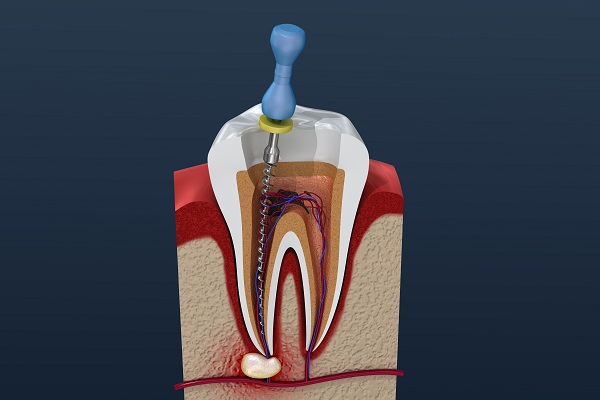Step-by-step Guide to a Root Canal Procedure

For many dental patients, getting a root canal can be scary. If you have long associated this procedure with pain and discomfort, it is time to understand how this process works. While there may be some soreness following the treatment, a root canal is not as rigorous as you may think. It can preserve teeth and keep infections from spreading through your mouth. Understanding the steps to this process can give you peace of mind and help you feel better about going through with it.
Conditions that may require this treatment
A routine dental appointment will not involve lengthy procedures. For a semiannual checkup, the dental staff will clean a patient’s teeth, take X-rays, examine the mouth for any problems and counsel the person on ways to maintain good oral health. If the dentist detects troubling conditions such as cavities, broken or chipped teeth or infections, additional work will follow. Endodontic treatment can help with some of the following issues:
- Significant decay where a filling would be insufficient
- Infection in the roots
- Infection affecting the blood vessels and nerves of the teeth
Symptoms that signal a person needs a root canal
It can be difficult for people to detect they have a minor cavity. Smaller problems may not even be detectable. However, if a patient needs a canal, the signs are usually obvious. A severe, continual toothache is a common sign that this treatment is essential. Other warnings include soreness and irritation in the gums along with sensitivity to hot and cold. Also, if it hurts a person to chew, there is probably a serious issue that endodontic treatment can address.
Dental examination
In emergencies, the dentist can perform a root canal in one visit. In many situations, though, the dentist may prefer to split up the process into two or three parts. First, the root canal professional will thoroughly examine the patient’s mouth and teeth to detect the severity of the problem. A staff member will take X-rays of the area. These actions will help the dentist confirm whether to go forward with the procedure.
Clean it out
Often at a subsequent appointment, the dentist will numb the patient’s mouth with a local anesthetic. Once the medication takes effect, the dentist will drill into the infected tooth down to the pulp chamber. This will be removed, along with areas where decay and infection have infiltrated. The dentist will inject medication to kill any lingering infection. Next, the dentist will seal up the tooth to prevent further issues.
Cap it off
Some dentists may choose to put a cap or crown on the repaired tooth. This often occurs at a follow-up visit. During this appointment, the dentist may also test the patient’s ability to bite normally. This visit gives the person the opportunity to express concerns or discuss any side effects from the procedure.
No need to fear
The days of dreading this endodontic procedure should be over. While there can be some residual soreness in the days following the treatment, the process itself should not be painful. If you have intense pain or swelling in your mouth, contact your dentist. Do not endure these oral problems any longer.
Request an appointment here: https://www.hudsonfamilydentalgj.com or call Hudson Family Dental at (970) 305-8727 for an appointment in our Grand Junction office.
Check out what others are saying about our services on Yelp: Read our Yelp reviews.
Recent Posts
Almost everyone experiences a stained tooth throughout their lives, which is where cosmetic dentistry can be helpful. There are many different treatment options that fall under the cosmetic dentistry category, all of which can be used to transform, restore or renew teeth that are not in optimal condition. Stains often result in embarrassment or shame;…
Before the invention of dental implants, the only options available to replace a lost tooth were dentures or bridges. Today, dental implants offer a solution that looks and feels like a natural tooth. They are attractive and comfortable, and they provide many advantages.If you are considering replacing a lost tooth with an implant, there are…
When people experience cavities, the resulting pain can interfere with eating and flare up when the cavity comes in contact with hot or cold foods. A laser dentist can assist with repairing cavities depending on their severity and in a way that reduces the pain typically associated with such a procedure. Those who want to…
If you are a denture wearer, you will probably need a denture repair at some point. A broken denture can be very unsettling. It prevents a person from doing some of the most basic things, like eating and talking to others. There is an ongoing debate whether it is advisable to DIY a broken denture.…


